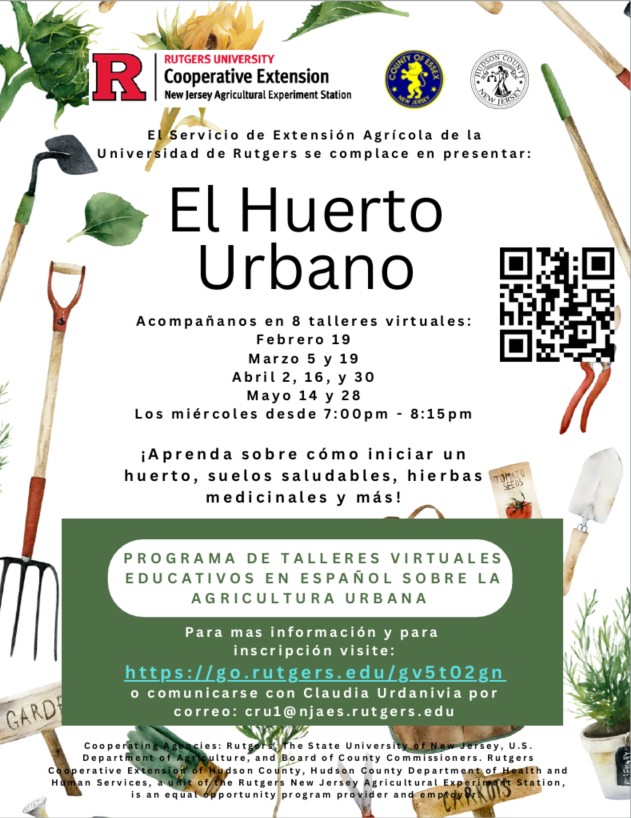El Servicio de Extensión Agrícola de la Universidad de Rutgers del Condado de Hudson y Essex se complacen en invitarte a nuestra seria virtual en español, El Huerto Urbano. Esta seria consiste en seminarios web en vivo en los que colegas del Servicio de Extensión Agrícola de New Jersey más expertos de USDA NRCS (Servicio de Conservación de Recursos Naturales) ofrecerán técnicas y consejos sobre un tema de jardinería diferente en cada sesión. Esta seria está dirigida a principiantes, personas interesadas en aprender a cultivar hortalizas y hierbas en espacios urbanos. ¡Aunque estas sesiones están diseñadas para adultos, en ella compartiremos actividades de jardinería para integrar a toda la familia! Acompáñanos los miércoles comenzando el 19 de febrero del 2025, a las 7:00 pm.
Estas sesiones virtuales duran 1 hora y 15 minutes y se llevaran a cabo en vivo a través de zoom. Todas las sesiones son gratis.
Para unirte, por favor regístrate aquí: https://go.rutgers.edu/gv5t02gn.



